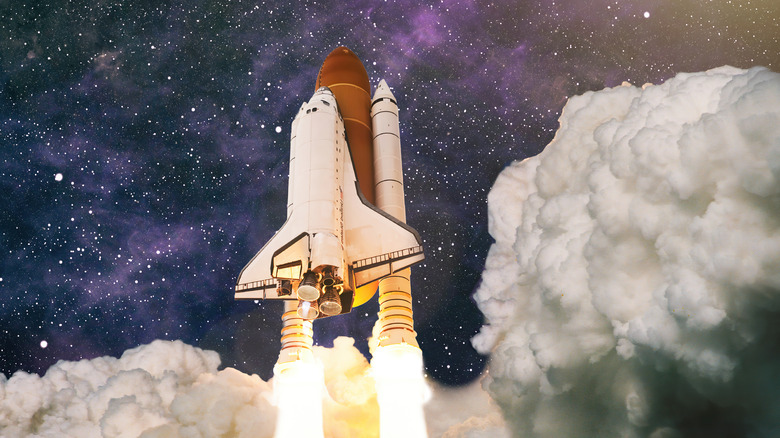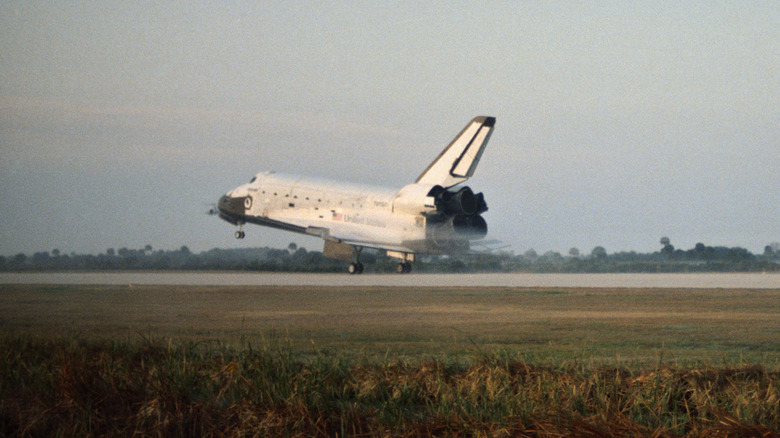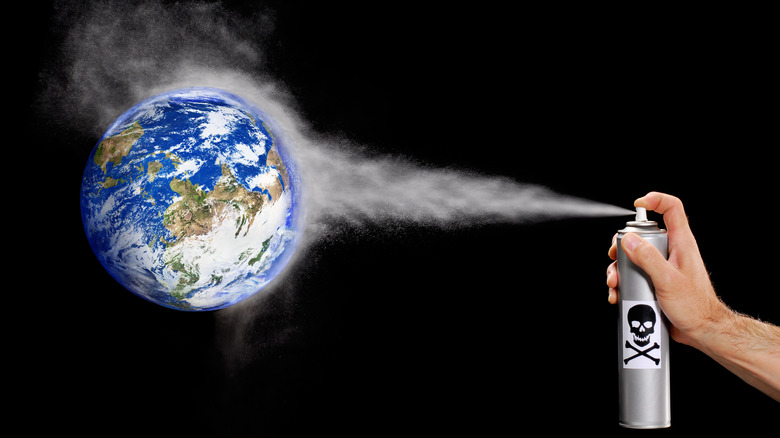ERBS, The Nasa Satellite Launched With The Challenger Shuttle, Is Finally Home
A lot of us go about our lives without really sparing a thought for our closest space-neighbors. The moon, for instance, is easily taken for granted. There it is, looking stunningly beautiful and large at times, but not generally doing much else. Right? Well, according to BBC Science Focus, we would be incredibly vulnerable to the influence of the gravity of other planets without it. The angle of the Earth's axis, if thrown off by this influence, would have catastrophic effects on our climate. And we don't exactly need any help in that regard.
The moon, of course, is a natural satellite, but we're also very dependent on artificial ones. On the subject of the moon, per Yahoo News, satellite navigation will have to be developed before regular trips there and back become practical. Not to mention other GPS systems, television channels, and other things that are also reliant on satellites.
From a space exploration standpoint, of course, the major application of satellites is simple: to be sent out to monitor great expanses that humanity has no hope of reaching and/or spending any protracted amount of time in just yet. It can be a long and thankless job: NASA's ERBS satellite that left with Challenger has finally made it back to Earth.
Challenger's great work lives on
The tragic fate of the space shuttle Challenger is very well known. Per Britannica, the craft was lost on January 28, 1986, exploding just 73 seconds after taking off from Florida's Cape Canaveral. The cause of the disaster, in which Challenger's full seven-person crew was sadly killed, was primarily the cold weather; the craft was compromised when the O-rings that held crucial elements together were weakened by the bitter temperature.
As NASA reports, June 27, 2015 marked the opening of the Forever Remembered exhibition at the Kennedy Space Center. Here, the 14 spacefarers who sadly died in the Challenger and Columbia disasters are honored and celebrated. It's also important to remember just how much Challenger specifically achieved, before it was lost in such devastating circumstances.
Challenger was destroyed at the beginning of its 10th mission to space. During its time in service, it achieved remarkable things. Among them was the launching of the ERBS satellite. Per Smithsonian Magazine, ERBS (Earth Radiation Budget Satellite) departed from Challenger in a mission that began on October 5, 1984. In January 2023, the outlet reports, it re-entered the planet's atmosphere, returning in rather dramatic fashion.
The ozone layer thanks you, ERBS
NASA explains that ERBS was one of a trio of satellites that embarked on the Earth Radiation Budget Experiment. Its goals were to provide new insight into the condition of the ozone layer and investigate the radiative energy budget. This is not a financial matter, NASA goes on, but rather "the balance between the amount of energy from the Sun that Earth absorbs or radiates." Understanding this balance better can prove crucial to determining scientific priorities and maintaining the health of our planet.
It certainly did, too: The satellite's Stratospheric Aerosol and Gas Experiment II indicated that the ozone layer was in a rather sorry state, and as a result, the world was able to act. As the Scientific Assessment of Ozone Depletion 2022 reported, "actions taken under the Montreal Protocol continued to decrease atmospheric abundances of controlled ozone-depleting substances (ODSs) and advance the recovery of the stratospheric ozone layer." The protocol itself may never have existed without the enterprising ERBS and the information it provided.
After almost 39 years orbiting the planet, NASA reports, ERBS (as predicted) largely burnt up on returning to the planet's atmosphere. Its life had been well lived and valuably spent, the organization stated.They estimated that it would last for only two years, but it remained in use for 21. During that time, it "actively investigated how the Earth absorbed and radiated energy from the Sun, and made measurements of stratospheric ozone, water vapor, nitrogen dioxide, and aerosols."


